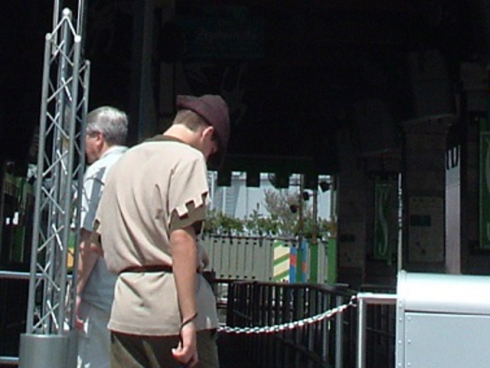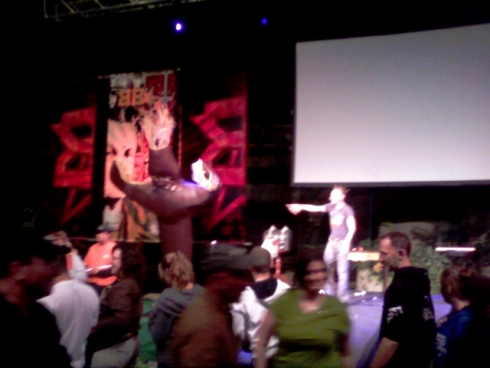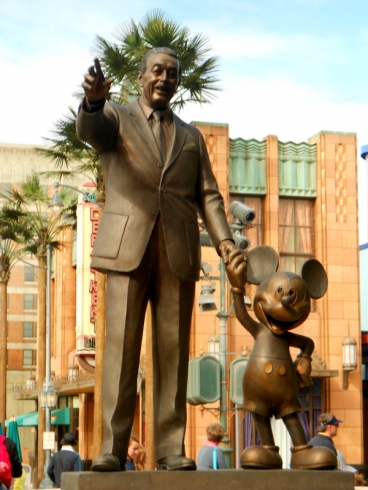4. Rotations and breaks
 Shrek Team MemberBoth Universal and Disney provide frequent employee rotations and breaks.
Shrek Team MemberBoth Universal and Disney provide frequent employee rotations and breaks.
Theme park employees work hard under often-difficult conditions. Outdoor positions are exposed to the summer heat and thunderstorms, and the humid winter cold. Indoor positions require stamina, attention to detail, and a great deal of both standing and walking. Most of my jobs were spieling positions, which meant delivering lengthy memorized scripts to guests while maintaining the other keys to guest service.
Both Universal Orlando and Walt Disney World recognize the importance of allowing employees to rest and recharge. They also realize that frequently moving to a new position keeps employees fresh and motivated. Consequently, both resorts utilize sophisticated rotation and break systems that are designed for employee comfort and efficiency.
Although all my Disney and Universal jobs provided very fair rotation cycles, Kongfrontation’s were by far the best. Most rotations consisted of two land-based positions followed by a round on a tram. Each rotation lasted 15 minutes, or 3 full ride cycles. If someone in the rotation was at lunch, the time in one position extended to 30 minutes, or 6 ride cycles. That meant that in a typical rotation, each person spent 45 minutes working between each 15-minute break, while a lunch rotation meant working for an hour and a half before the next break.
5. Playing with guests
 Brian BrushwoodBizarre magician Brian Brushwood knew the importance of playing with his Halloween Horror Nights audience.
Brian BrushwoodBizarre magician Brian Brushwood knew the importance of playing with his Halloween Horror Nights audience.
Where else but in a theme park can you actually get paid to play with both little kids and adults? The employees are part of the show, and are expected to do what they can to enhance the believability of the fantasy that the parks create. From asking those in line for Kilimanjaro Safaris if they are all packed for their two-week adventure to joking around with tipsy attendees at a Universal after-hours event, playing with guests is a crucial part of the job at both resorts.
The ability to read an audience is absolutely critical to providing an excellent guest experience. For example, Islands of Adventure’s Jurassic Park hinges on the basic concept that dinosaurs have been brought back from extinction. No matter what a guest asks, employees are supposed to stay in character and maintain the perspective that the dinosaurs are fully real. However, it is easier to get some guests to suspend disbelief than others. Knowing when to pet the dinosaur and show off its realistic movements, versus when to launch into a scientific explanation of the cloning process, helps to create a magical experience for all guests.
6. The “Disney Point”
 Partners StatueThe Partners statue shows that Walt did not always use the Disney point. Image: Jess13131, DeviantArt.
Partners StatueThe Partners statue shows that Walt did not always use the Disney point. Image: Jess13131, DeviantArt.
Attributed to some long-lost time in Disney history, the “Disney point” is now used extensively in guest service positions around the world. Pointing with one finger is considered offensive in some cultures. In addition, pointing with one finger could give a nearby guest the impression that the employee is pointing at him or her.
The two-finger point is so ingrained in many Walt Disney World and Universal employees that they are unable to stop when they leave their jobs. Even decades later, many people claim that they still use the famous “Disney point.”
Add new comment